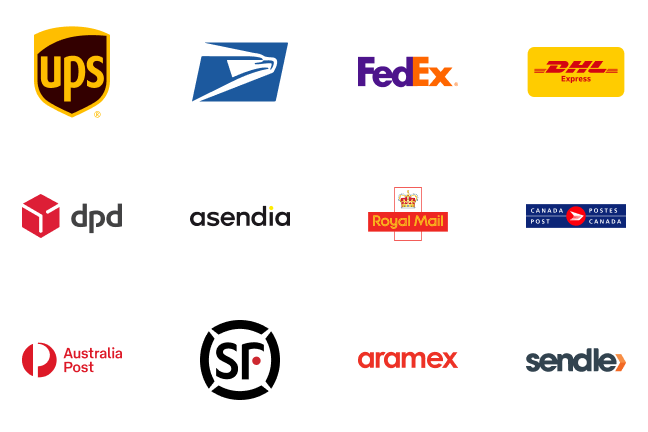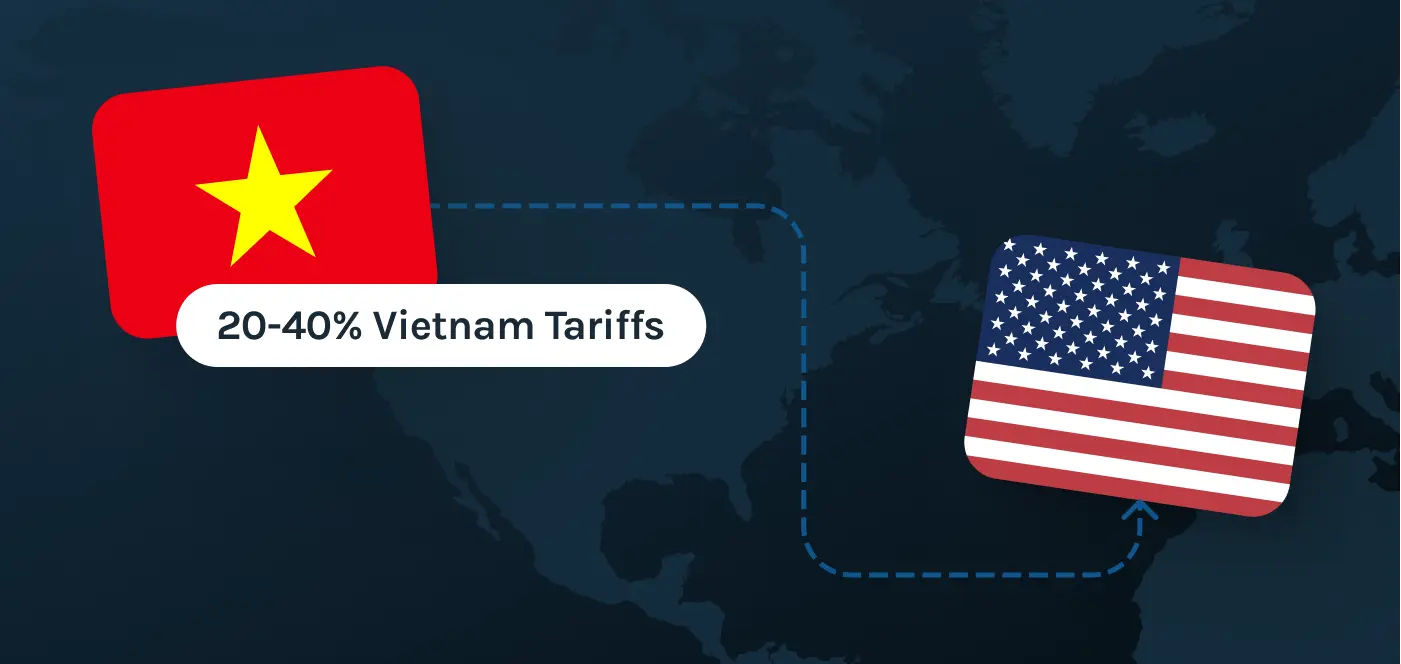The return of Donald Trump to the White House has reignited global trade tensions, and UK businesses are once again in the crosshairs. Since early 2025, President Trump has announced a series of new tariffs on imports—including a 10% baseline tariff on most UK goods and even higher rates on key sectors like steel, aluminium, and cars.
For small-to-medium online sellers, especially those using platforms like Shopify, Amazon, or Etsy, these new costs can be the difference between growth and struggle.
While the UK government has reached a temporary trade agreement with the US—known as the Economic Prosperity Deal (EPD)—many details remain uncertain. eCommerce operators are left navigating unclear tariff schedules, quota limits, and shifting supply chain pressures.
In this article, we break down what these tariffs mean, how they compare to those imposed on other trading partners, and what UK sellers can do right now to protect profitability while maintaining access to the vital US market.
What Are Tariffs and Why Is the US Using Them?
A tariff is a tax on goods imported into a country. If you're a UK exporter, these taxes affect your bottom line.
Since returning to office in 2025, President Trump has imposed new import tariffs as an aggressive trade policy tool. The idea is to protect jobs, reduce America’s trade deficit, and challenge what he calls unfair treatment from other countries.
Under US law, these actions are often justified under national security concerns. That lets the White House bypass Congress and act quickly. For small and medium-sized UK eCommerce businesses, these decisions ripple through supply chains, raising prices and increasing delivery risks.
What Are the New Tariffs Imposed by the US on the UK?
Since early 2025, the US has imposed a baseline tariff of 10% on most UK exports to the US market. Another important change is that the US de minimis exemption ends on August 29, 2025 for all countries, which is likely to increase costs and paperwork for eCommerce businesses the world over.
Major sectoral tariffs include:
- Car imports: 25% tariff (on both vehicles and parts)
- UK steel and aluminium: up to 50%
- Pharmaceuticals and aerospace components: currently exempt, but may remain subject to new tariffs
This followed an executive order signed by President Trump, who claimed these measures are needed to secure supply chains and protect US industries.
Here’s an overview of what the UK tariffs look like:
| Category |
Product |
Retail Price (Before) |
New Landed Price (Now) |
Tariff & Tax Applied |
Impact on Brand |
| Industrial |
Tool Kit (Heavy Duty) |
$150 |
$181.50 |
10% Baseline Tariff + 9% Tax |
May need to reposition as premium or absorb margin loss for competitiveness in B2B |
| Automotive |
Car Brake Pads Set |
$85 |
$102.78 |
10% Tariff (Quota) + 9% Tax |
Within quota range, manageable for now—above 100K units, costs spike to 25% |
| Pharmaceuticals |
Vitamin Supplement Pack |
$60 |
$65.40 |
0% Tariff + 9% Sales Tax (currently exempt) |
Tariff-free for now, but flagged for review—brands should monitor closely |
| Aerospace |
Turbine Calibration Device |
$1,200 |
$1,308 |
0% Tariff + 9% Tax |
High-value item exempt under EPD; aerospace exports remain competitive short-term |
| Steel & Aluminium |
Steel Frame Set (Construction) |
$500 |
$592.50 |
25% Tariff + 9% Tax |
Profit margins sharply impacted; strategic shipping volume or quota use essential |
Notes:
- Tax refers to standard US sales tax, estimated at 9% for illustrative purposes.
- Tariff rates reflect UK-specific rates under the Trump administration’s 2025 policies, including the Economic Prosperity Deal (EPD) outcomes and current sectoral treatments.
- Some items like pharmaceuticals and aerospace components remain exempt but are under review.
UK vs EU Tariff Treatment: Who Got the Better Deal?
The UK deal sets a 10% tariff, compared to the 15% tariff EU goods now face under the US-EU trade deal. But the benefits depend on the details.
For instance:
- EU exports of cars to the US are nearly 7x higher than UK exports.
- UK exports over quota may face higher duties than EU goods.
- The European Union is negotiating deeper energy and defence commitments with the US in exchange for tariff relief.
Experts like David Henig from the European Centre for International Political Economy caution that headline rates can be misleading without full context.
Sector-by-Sector Impact on UK Industries
Let’s look at how some UK industries are affected:
Automotive
- Faces strict quotas and 10–25% tariffs
- Competition from South Korea and other trading partners increases pressure on pricing
UK Steel & Aluminium
- Still subject to 25–50% tariffs
- Tariff cuts depend on compliance with secure supply chain rules
Pharmaceuticals & Aerospace
- Currently exempt under Trump’s tariffs
- Exports could be targeted if US reviews continue under President Trump’s administration
The Economic Impact of Tariffs on the UK
The Office for Budget Responsibility estimates:
- 0.3% drop in GDP with mild effects
- Up to 1% drop if a full trade war breaks out
Exports of UK goods to the US were valued at £59B in 2024, led by cars, medicinal products, and machinery. If trading blocs retaliate, the damage could be worse.
Many eCommerce stores are already facing thinner margins. Higher tariff rates eat into profits or force higher prices, affecting conversion at checkout. To make the process more transparent and to avoid surprises at checkout, you can use a tax and duties calculator to understand the costs upfront.
Will Tariff Gaps Encourage Business Relocation?
Some believe other trading partners, such as EU exporters, may shift operations to the UK to access better US trade terms. But that’s unlikely:
- Relocation is costly and risky
- President Trump announced many tariff shifts via social media without warning
- A temporary reciprocal tariff rate doesn’t justify reshuffling global supply chains
For smaller businesses, it's better to focus on automation and multi-carrier shipping to offset rising costs. Another good idea is to look into switching to a US-based 3PL provider, which could help evade the new tariff costs.
What Was the UK Tariff Before Trump?
Before 2025, the average UK tariff on US imports was about 2.2%. For exports, many goods entered the US under low or zero tariff terms due to cooperative agreements.
That changed when Donald Trump announced sweeping tariff hikes. He called it "Liberation Day"—a reset of US trade. As part of a wider strategy to "make America wealthy again," he raised rates on nearly every trading partner except Mexico, Canada, and China—who received specific exemptions or alternative quotas.
This reversal increased the cost of doing business for UK exporters, especially those relying on predictable, tariff-free access to US consumers.
What’s Next for UK Trade Policy?
The UK is stuck between two paths:
- Prioritize US access, as President Trump imposed tighter restrictions globally
- Rebuild stronger ties with European trading partners
The stock market and investors are watching closely. The economic impact of tariffs will depend on how quickly clear, binding agreements are made.
UK sellers should:
- Monitor official updates from the Trade Representative
- Use platforms like Easyship to compare delivery options
- Consider adjusting sourcing or pricing to absorb tariff increases
Ready to simplify and save on shipping?
Easyship is here to help.
Easyship helps eCommerce sellers stay profitable in a changing trade environment. With reciprocal tariffs, customs duties, and new rules for cross-border orders, our free shipping tools and smart dashboard are built to help you ship smarter and sell globally—without the stress.
FAQ: Trump Tariff UK & What It Means for UK Businesses
What was the UK tariff on US imports before Trump’s 2025 tariffs?
Before 2025, the average UK tariff on goods imported into the US was about 2.2%, under WTO and free‑trade arrangements. Meanwhile, most UK exports enjoyed low or zero tariffs into the US. That changed when Donald Trump announced sweeping tariffs on April 2, 2025—dubbed “Liberation Day” by the **White House”—dramatically altering trade norms.
Who pays the US tariffs on UK goods—importers or exporters?
Tariffs are paid by the importer (your buyer in the US), since the tax is collected at US customs. UK exporters are indirectly impacted because higher import costs can force them to lower prices or face lost sales. In contracts using DDP Incoterms, UK sellers may be liable for tariff costs—so check shipping terms carefully.
How does the UK’s 10% baseline tariff compare to EU treatment?
The UK secured a lower 10% tariff rate under its UK‑US Economic Prosperity Deal, while most EU goods face a 15% tariff under the US‑EU trade deal. However, the UK’s quota‑limited car export terms mean that EU exporters may still enjoy broader access. Also, the UK’s rate may be added on top of existing duties, making the effective tariff higher.
What sectors get special treatment under the UK‑US deal?
Important carve‑outs under the EPD include:
- Automotive: Up to 100,000 UK cars enter the US each year at the 10% rate.
- Steel & aluminium: Still face a 25% tariff, pending transition to a quota system.
- Pharmaceuticals & aerospace: Currently exempt, but future tariffs depend on regulatory alignment and secure supply chain compliance.
Should UK eCommerce businesses expect a trade war?
The risk exists. If other trading partners retaliate or if further reciprocal tariffs are imposed, UK growth could slow by up to 1% of GDP, compared to 0.3% if no escalation occurs. For online sellers, the implications include slower demand, higher margins under pressure, and uneven access to courier services.















































.svg)
.svg)






.avif)
.avif)

.avif)
.avif)


.avif)


.avif)










.avif)
.avif)



.avif)
.avif)


.avif)
.avif)


.avif)











.svg)










